These Student Projects Could Help Build a Moon Base
An illustration of LATTICE's three interlocking systems is pictured above.
The LATTICE and HOMES projects out of Caltech demonstrate how to move materials across the lunar surface and keep pesky moon dust out of lunar habitats.
By Ker Than
For those who dream of building a base on the moon, a major engineering challenge is figuring out how to move rovers, ice, and other cargo across treacherous terrain and out of steep, jagged lunar craters.
“Most of the lunar base scenarios that NASA is considering involve trying to either live in a crater or get things in and out of craters,” says third-year Caltech undergraduate Lucas Pabarcius, who leads the Lunar Architecture for Tree Traversal in-service-of Cable Exploration (LATTICE) team. “And that’s an extreme locomotion challenge because these crater walls are kilometers long and have 30- to 40-degree slopes.”
The LATTICE team is now designing a self-deploying modular robotic system for transporting ice and other assets in and out of those craters. The system, which would work like a zip line on the moon, drives stakes in the ground, attaches cables to the stakes, and transports cargo across the cables in robotic shuttles. LATTICE was among seven finalists in NASA’s 2022 Breakthrough, Innovative, and Game-changing (BIG) Idea Challenge, and its 60-member team was the only one comprised entirely of undergraduates.
The most engineered part of LATTICE are the shuttles that ride on the cables, Pabarcius explained. They are able to carry significantly larger payloads relative to their mass and at faster speeds than can be achieved by comparable lunar rovers, all while traversing up and down steep slopes. The shuttles also produce the tension required to lift themselves off the ground and maintain traction on their journey using compact actuators that can put out as much torque as Formula 1 race cars. The operating mechanism for the shuttle was developed by the team from scratch and is in the process of being patented.
LATTICE follows Caltech’s 2021 BIG Idea finalist project, the Habitat Orientable & Modular Electrodynamic Shield (HOMES), which focused on the problem of lunar dust. “Lunar dust is incredibly abrasive,” says HOMES team leader Malcolm Tisdale, who is also a third-year Caltech undergraduate. “Its properties make it a large issue for any kind of engineered system on the moon.”
HOMES employs modular square tiles that can snap together to form an electrodynamic dust shield. Wires inside the tiles generate an electrical field that extends across the tiles’ surfaces and repels dust particles. By varying or alternating the current in the wires, or by changing the orientation of the tiles, HOMES can control the removal of dust. “It looks like magic,” Tisdale says. “The dust just levitates to one side.”
Last November, the LATTICE team tested a small-scale prototype of its system in a desert in California’s Lucerne Valley. The team was especially interested in the performance of the system for driving stakes into the ground. The stakes function as anchor points for the cables upon which the cargo-carrying shuttles travel.
“LATTICE did better than we expected,” Pabarcius says. “We had to design a system that was lightweight and that could also drive these rods into the ground under low power, so it’s actually quite slow because of that. The remarkable thing is it seems like nothing’s happening, but then you walk away and you come back 15, 20 minutes later, and the stake is in the ground. That’s pretty cool.”
Tisdale and Pabarcius praised their mentors at Caltech and JPL, who they say are always willing to tackle problems with the students and provide technical advice. One of those mentors was Soon-Jo Chung, Bren Professor of Control and Dynamical Systems at Caltech and a JPL senior research scientist.
“It was such a joy to work with our undergrads,” Chung says. “Caltech students are really busy taking courses, and they don’t get extra credit for participating in these projects. They require a lot of time, so the students have to be really dedicated.”
Chung’s own lab has its sights set on the moon too. His team is developing a “multi-agent coordination algorithm” that could allow multiple rovers and drones on the moon or Mars to sync their movements and share sensory data. “It’s really swarm technology,” Chung says. “Our aim is to employ these new algorithms of autonomy for lunar exploration.”
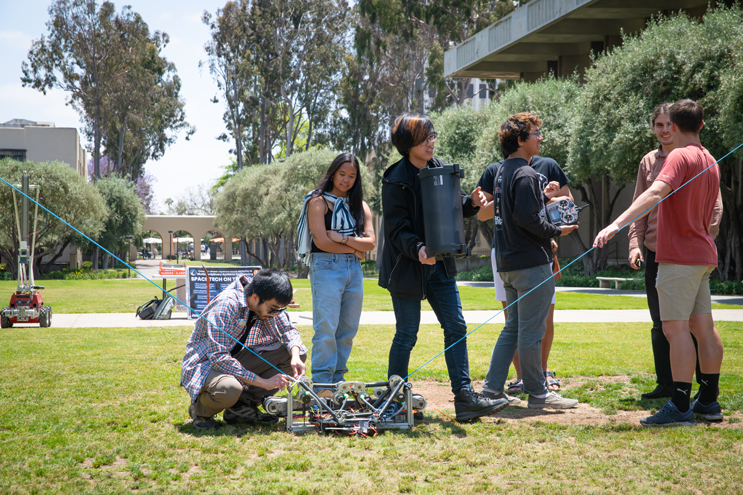
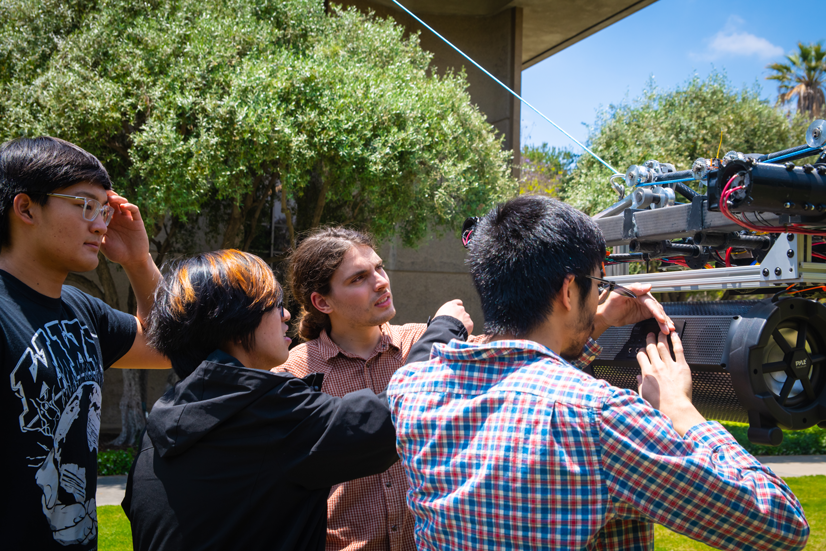
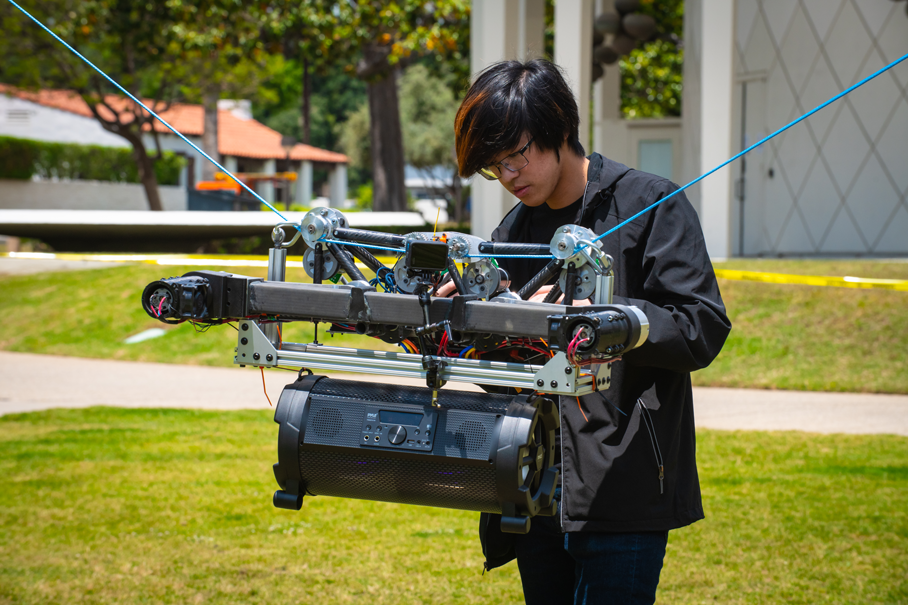
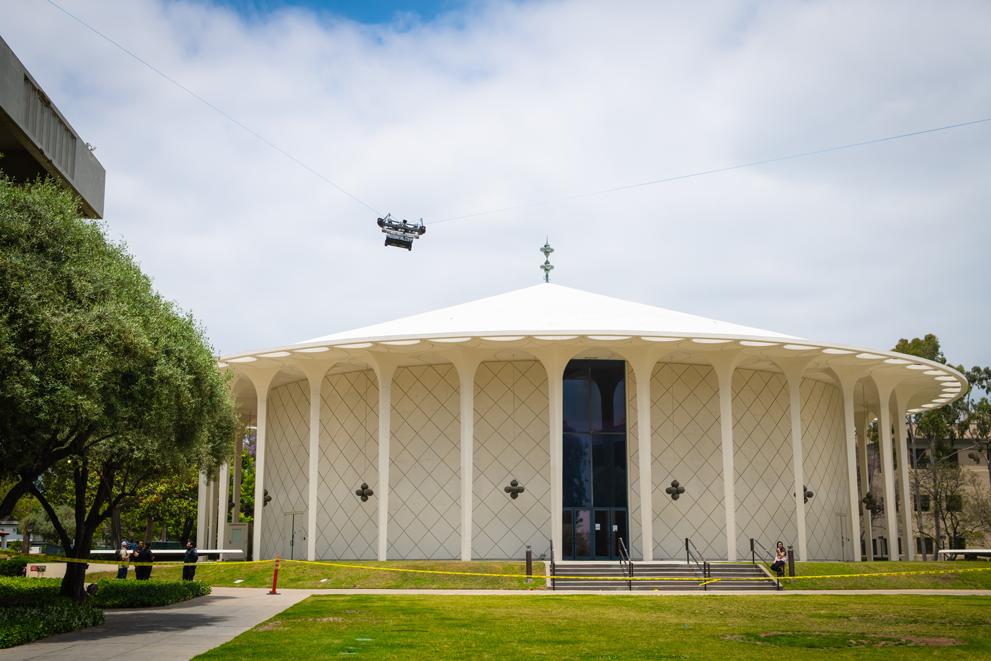
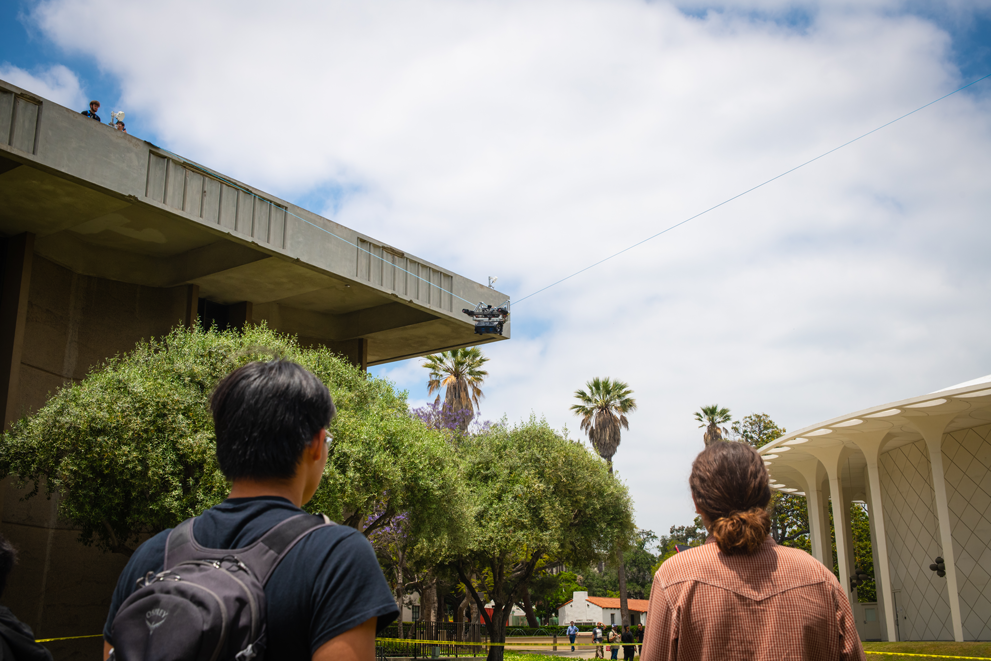
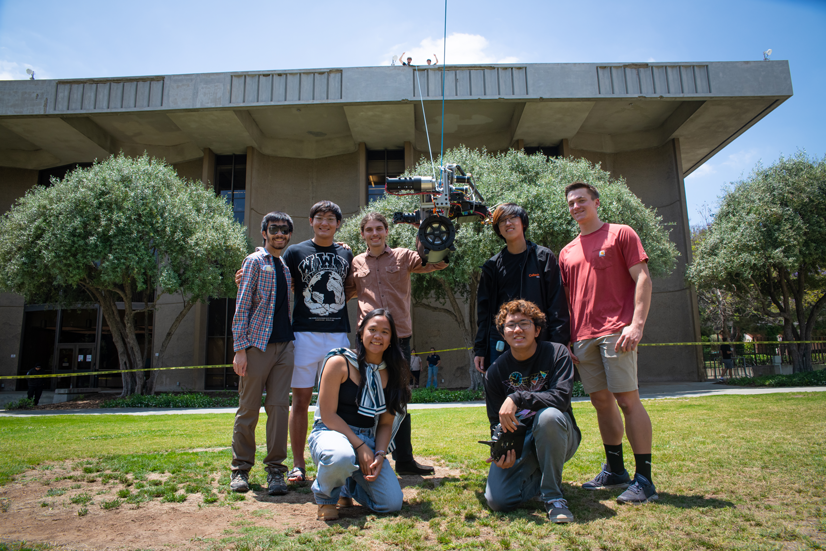
LATTICE won the 2022 BIG Idea Challenge Most Visionary Concept award, and its development continues at Caltech. Pabarcius and Tisdale are optimistic that some version of the system could one day be deployed on the moon—or beyond. “The really exciting thing about LATTICE is that it’s a general architecture,” Pabarcius says. “We’re not married to any specific implementation because depending on what your goals are, it’s super easy to adapt.”
Because dust is a common problem in planetary exploration, HOMES could also be modified for a variety of purposes. For example, NASA’s InSight Mars lander was forced to end its mission last year when excessive dust on its solar panels prevented recharging. Tisdale thinks HOMES could help prevent similar situations. “The same exact technology, with a few tweaks of geometry, would work on Mars,” he says.
Chung says LATTICE and HOMES represent “really, really advanced concepts that can shape the future of lunar exploration.” The projects illustrate, he adds, how Caltech has such a large impact on planetary exploration, in part because of the Institute’s small size. “What each faculty member and student does actually carries a huge weight here,” Chung says.

